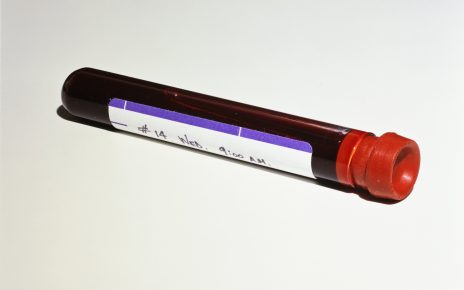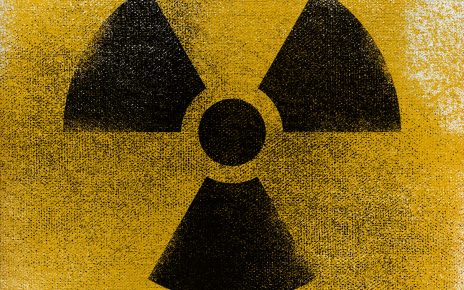In Lidia Morawska’s home city of Brisbane on Australia’s east coast, roadside signs broadcast a simple message: ‘Wash hands, save lives.’ She has no problem with that: “Hand washing is always a good measure,” says the aerosol scientist, who works at the Queensland University of Technology. But the sign might be outdated.
Converging lines of evidence indicate that SARS-CoV-2, the coronavirus responsible for the COVID-19 pandemic, can pass from person to person in tiny droplets called aerosols that waft through the air and accumulate over time. After months of debate about whether people can transmit the virus through exhaled air, there is growing concern among scientists about this transmission route.
This week, Morawska and aerosol scientist Donald Milton at the University of Maryland, College Park, supported by an international group of 237 other clinicians, infectious-disease physicians, epidemiologists, engineers and aerosol scientists, published a commentary in the journal Clinical Infectious Diseases that urges the medical community and public-health authorities to acknowledge the potential for airborne transmission. They also call for preventive measures to reduce this type of risk.
The researchers are frustrated that key agencies, such as the World Health Organization (WHO), haven’t been heeding their advice in their public messages.
In response to the commentary, the WHO has softened its position, saying in a press conference on July 7 that it will issue new guidelines about transmission in settings with close contact and poor ventilation. “We have to be open to this evidence and understand its implications regarding the modes of transmission, and also regarding the precautions that need to be taken,” said Benedetta Allegranzi, technical leader of the WHO task force on infection control.
Morawska is “really pleased, relieved, and amazed”, by the WHO’s statement.
For months, the WHO has steadfastly pushed back against the idea that there is a significant threat of the coronavirus being transmitted by aerosols that can accumulate in poorly ventilated venues and be carried on air currents. The agency has maintained that the virus is spread mainly by contaminated surfaces and by droplets bigger than aerosols that are generated by coughing, sneezing and talking. These are thought to travel relatively short distances and drop quickly from the air.
This type of guidance has hampered efforts that could prevent airborne transmission, such as measures that improve ventilation of indoor spaces and limits on indoor gatherings, say the researchers in the commentary: “We are concerned that the lack of recognition of the risk of airborne transmission of COVID-19 and the lack of clear recommendations on the control measures against the airborne virus will have significant consequences: people may think that they are fully protected by adhering to the current recommendations, but in fact, additional airborne interventions are needed for further reduction of infection risk.”
This is particularly important now, as government-mandated lockdowns ease and businesses reopen. “To control [the pandemic], we need to control all the means of infection,” says Morawska, who first contacted the WHO with her concerns and published a summary of the evidence in early April.
But this conclusion is not popular with some experts because it goes against decades of thinking about respiratory infections. Since the 1930s, public-health researchers and officials have generally discounted the importance of aerosols — droplets less than 5 micrometres in diameter — in respiratory diseases such as influenza. Instead, the dominant view is that respiratory viruses are transmitted by the larger droplets or through contact with droplets that fall on surfaces or are transferred by people’s hands. When SARS-CoV-2 emerged at the end of 2019, the assumption was that it spread in the same way as other respiratory viruses and that airborne transmission was not important.
The WHO is following the available evidence, and has moderated its earlier opposition to the idea that the virus might spread through aerosols, according to Allegranzi. She says that although the WHO acknowledges that airborne transmission is plausible, current evidence falls short of proving the case. She adds that recommendations for physical distancing, quarantine and wearing masks in the community are likely go some way towards controlling aerosol transmission if it is occurring.
Age-old debate
The debate over transmission routes has big implications for efforts to stop the virus from spreading. Smaller, lighter aerosols can linger and accumulate in the air and travel long distances on air currents. But studies going back to those of engineer William Wells in the 1930s have suggested that large droplets fall out of the air within about 2 metres.
When SARS-CoV-2 emerged, health officials recommended frequent hand washing and maintaining a physical distance to break droplet and contact transmission routes. And some researchers and clinicians say these approaches are enough. Contact-tracing data support those measures, says Kate Grabowski, an infectious-disease epidemiologist at Johns Hopkins University in Baltimore, Maryland. “The highest-risk contacts are those that are individuals you share a home with or that you’ve been in a confined space with for a substantial period of time, which would lead me to believe it’s probably driven mostly by droplet transmission,” she says, although she says that aerosol transmission might occur on rare occasions.
But other researchers say that case studies of large-scale clusters have shown the importance of airborne transmission. When the news media reported large numbers of people falling ill following indoor gatherings, that caused Kim Prather, an aerosol scientist at the University of California, San Diego, to begin questioning the adequacy of the social-distancing recommendations from the US Centers for Disease Control and Prevention (CDC), which call for people to stay 6 feet (1.8 metres) apart. The indoor spread suggested the virus was being transmitted in a different way from how health authorities had assumed. “For an atmospheric chemist, which I am, the only way you get there is you put it in the air and everybody breathes that air,” says Prather, who joined the commentary. “That is the smoking gun.”
Many researchers concerned about airborne transmission point to the example of a fateful choir rehearsal that took place an hour’s drive from Seattle, Washington, on 10 March. Sixty-one members of the Skagit Valley Chorale gathered for a practice that lasted two-and-a-half hours. Despite there being hand sanitizer at the door, and choir members refraining from hugs and handshakes, at least 33 choristers contracted SARS-CoV-2, and two eventually died. Investigators concluded that the virus could have spread in aerosols produced by singing, and a ‘super-emitter’ who produced more aerosol particles than is typical, although they couldn’t rule out transmission through objects or large droplets.
But Morawska has modelled the conditions in the rehearsal hall and says there is no need to invoke the idea of a superspreader. Inadequate ventilation, the long exposure time and the singing were sufficient to explain the number of people who became infected. And no amount of ventilation could have reduced the risk to an acceptable level for the two-and-a-half-hour rehearsal, she says.
In another case, researchers used a tracer gas to show that aerosols carried on currents from an air-conditioning unit in a restaurant in Guangzhou, China, were to blame for an outbreak affecting ten diners from three separate families. None of the staff or patrons seated near other air-conditioning units were infected.
Meanwhile, a tour-bus passenger in Hunan province in China infected 8 of the 49 people on the bus. One of those sat 4.5 metres away from the infected person and entered and exited the bus through a different door. “That excludes the possibility of contacting each other or [being] in very close contact,” says Yang Yang, an epidemiologist at the University of Florida in Gainsville who is co-authoring a report on the case. “I think there is enough evidence for us to be very concerned in indoor environments, especially in confined spaces,” he says.
Dangerous droplets
Case studies can provide circumstantial evidence that aerosols are carrying the virus, but researchers want to nail down how and when that happens. The problem is catching aerosols in the act.
Laboratory studies going back to the 1930s and 1940s concluded that droplets expelled through talking or coughing are larger than aerosols. These bigger droplets, more than 5 micrometres in diameter, drop out of the air quickly because they are too heavy to ride on light air currents.
But more-sensitive experiments are now painting a more complex picture that points to the importance of aerosols as a transmission route. A study published in May used laser-light scattering to detect droplets emitted by healthy volunteers when speaking. The authors calculated that for SARS-CoV-2, one minute of loud speaking generates upwards of 1,000 small, virus-laden aerosols 4 micrometres in diameter that remain airborne for at least 8 minutes. They conclude that “there is a substantial probability that normal speaking causes airborne virus transmission in confined environments”.
Another study published by Morawska and her colleagues as a preprint, which has not yet been peer reviewed, found that people infected with SARS-CoV-2 exhaled 1,000–100,000 copies per minute of viral RNA, a marker of the pathogen’s presence. Because the volunteers simply breathed out, the viral RNA was likely to be carried in aerosols rather than in the large droplets produced during coughing, sneezing or speaking.
Other laboratory studies suggest that aerosols of SARS-CoV-2 remain infectious for longer than do aerosols of some related respiratory viruses. When researchers created aerosols of the new coronavirus, they remained infectious for at least 16 hours, and had greater infectivity than aerosols of the coronaviruses SARS-CoV and MERS-CoV, which cause severe acute respiratory syndrome and Middle East respiratory syndrome, respectively.
Outside the lab, it is much more of a challenge to detect aerosols and show that they can transmit the virus. In one study, researchers in Wuhan, China, detected SARS-CoV-2 RNA in aerosol samples collected in a hospital. But the WHO and others have criticized studies such as this because they detect only viral RNA, not infectious virus. “All these researchers are struggling to find the viable virus” in clinical settings, says Allegranzi. “Whenever this is found, it will be really very relevant.”
One of the problems researchers face in studying virus viability in aerosols is the way that samples are collected. Typical devices that suck in air samples damage a virus’s delicate lipid envelope, says Julian Tang, a virologist at the University of Leicester, UK. “The lipid envelope will shear, and then we try and culture those viruses and get very, very low recovery,” he says.
A few studies, however, have successfully measured the viability of aerosol-borne virus particles. A team at the US Department of Homeland Security Science & Technology Directorate in Washington DC found that environmental conditions play a big part in how long virus particles in aerosols remain viable. SARS-CoV-2 in mock saliva aerosols lost 90% of its viability in 6 minutes of exposure to summer sunlight, compared with 125 minutes in darkness. This study suggests that indoor environments might be especially risky, because they lack ultraviolet light and because the virus can become more concentrated than it would in outdoor spaces.
Researchers say that one big unknown remains: how many virus particles are needed to trigger an infection? That’s one reason that Allegranzi would like to see randomized trials that demonstrate that interventions aimed at controlling aerosols actually work. One example, she says, would be a trial showing that tight-fitting respirator masks offer better protection than looser-fitting medical masks in a health-care setting.
Tang, who contributed to the commentary, says the bar of proof is too high regarding airborne transmission. “[The WHO] ask for proof to show it’s airborne, knowing that it’s very hard to get proof that it’s airborne,” he says. “In fact, the airborne-transmission evidence is so good now, it’s much better than contact or droplet evidence for which they’re saying wash [your] hands to everybody.”
Policy evolution
Ultimately, says Morawska, strong action from the top is crucial. “Once the WHO says it’s airborne, then all the national bodies will follow,” she says.
In the commentary in Clinical Infectious Diseases, she and the other researchers argue that studies on SARS-CoV-2 and other viruses strongly suggest that airborne transmission of SARS-CoV-2 is an important pathway. The commentary urges public-health organizations, including the WHO, and the medical community to take into account the possibility of the airborne route.
The WHO says it is paying attention to such concerns. It will “continue to examine everything that is emerging”, says Allegranzi. But last week, she questioned the qualifications of those driving the debate. “There is this movement, which made their voice very loud by publishing various position papers or opinion papers,” she says. “Why don’t we ask ourselves … why are these theories coming mainly from engineers, aerobiologists, and so on, whereas the majority of the clinical, infectious-diseases, epidemiology, public health, and infection-prevention and control people do not think exactly the same? Or they appreciate this evidence, but they don’t think that the role is so prominent?”
Morawska disputes this characterization. And the list of people who joined the commentary reveals 40 physicians, virologists and infectious-disease epidemiologists, along with at least 20 aerosol scientists who work directly on transmission of infectious agents.
During the 7 July press conference, Maria Van Kerkhove, the WHO’s technical lead for COVID-19, said about the commentary; “Many of the signatories are engineers, which is a wonderful area of expertise, which adds to growing knowledge about the importance of ventilation.”
Governments have started to move on their own to combat airborne transmission. In May, the guidance from the German department of health changed to state explicitly that “Studies indicate that the novel coronavirus can also be transmitted through aerosols … These droplet nuclei can remain suspended in the air over longer periods of time and may potentially transmit viruses. Rooms containing several people should therefore be ventilated regularly.” The CDC doesn’t mention aerosols or airborne transmission, but it updated its website on 16 June to say that the closeness of contact and the duration of exposure is important.
A spokesperson for the UK’s Scientific Advisory Group for Emergencies says there is weak evidence for aerosol transmission in some situations, but the group nonetheless recommends “that measures to control transmission include those that target aerosol routes”. When the United Kingdom reviewed its social-distancing guidelines, it advised people to take extra precautions in situations where it isn’t possible to stay 2 metres apart. The advice includes recommendations to wear a face mask and to avoid face-to-face interactions, poor ventilation and loud talking or singing.
Allegranzi says that the WHO’s panel of 35 experts that vets emerging evidence has discussed airborne transmission on at least four occasions, and that the WHO is working with aerobiologists and engineers to discuss emerging evidence and develop better ventilation guidelines.
This is not the first time during the pandemic that clinicians and researchers have criticized the WHO for being slow to update guidelines. Many had called on the agency early on to acknowledge that face masks can help to protect the general public. But the WHO did not make an announcement on this until 5 June, when it changed its stance and recommended the wearing of cloth masks when social distancing wasn’t possible, such as on public transport and in shops. Many countries were already recommending or mandating their use. On 3 April, the CDC issued recommendations to use masks in areas where transmission rates are high. And evidence backs up those actions: a systematic review found ten studies of COVID-19 and related coronaviruses — predominantly in health-care settings — that together show that face masks do reduce the risk of infection.
Allegranzi acknowledges that regarding the WHO’s position on masks, “the previous [advice] maybe was less clear or more cautious”. She says that emerging evidence that a person with SARS-CoV-2 is able to pass it on before symptoms have started (pre-symptomatic) or without ever showing symptoms (asymptomatic), factored into the decision to change the guidance. Additional research — commissioned by the WHO — showing that cloth face masks are an effective barrier, was also an important factor.
Researchers who argue for the importance of aerosols say that governments and businesses should take specific steps to reduce this potential route of transmission. Morawska would like to see recommendations against air recirculation in buildings and against overcrowding; and she calls for standards that stipulate effective levels of ventilation, and possibly ones that require air systems to filter out particles or use ultraviolet light to kill airborne viruses.
Allegranzi maintains that current WHO recommendations are sound. “It’s a bundle of precautions, including hand hygiene, including masks, including the distancing, which are all important,” she says. “Some of these measures will have an impact also on aerosol transmission, if it’s a reality.
This article is reproduced with permission and was first published on July 8 2020.




